Meeting Warehouse Space Constraints And Fast-Growing Exports Requirements in Vietnam with Automated Pallet Exchange
Are you watching your business in Vietnam grow at an incredible speed? It's an amazing feeling, but this success often brings a hidden problem. Your warehouse, once perfectly sized, is now overflowing. You're struggling to manage inventory, and every square meter feels precious. This pressure is made worse by the demands of international exports. Each shipment requires specific, often expensive, pallets, and a single mistake can cause costly delays at customs. It feels like your own growth is creating a logistical bottleneck that threatens to slow you down.
An automated pallet exchange system directly solves these challenges. It helps you meet the demands of fast-growing exports from Vietnam by quickly and safely transferring your goods from in-house storage pallets to compliant export pallets right before shipping. At the same time, it tackles warehouse space constraints by allowing you to use space-saving methods like slip sheets for internal storage, effectively maximizing the capacity of your existing facility. This technology turns a major operational headache into a streamlined, efficient process.
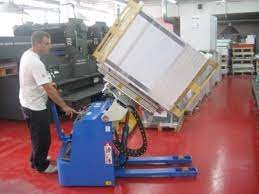
I’ve seen this exact situation play out many times. As an engineer and now a factory owner in the packaging industry, I've visited countless facilities that are bursting at the seams. They have the orders and the production capacity, but their logistics are holding them back. They are stuck between the high cost of building a new warehouse and the inefficiency of their current setup. This is where strategic automation makes all the difference. In this article, I want to share my experience and show you how a single piece of equipment can solve two of your biggest challenges, freeing you to focus on what you do best: growing your business.
How Can Automated Pallet Exchangers Solve Critical Warehouse Space Shortages?
Is your warehouse floor packed with products, leaving no room to maneuver? You know that pallets are essential for moving goods, but you also see how much valuable space they consume, especially when they just sit in storage racks. This lack of space slows down your team, creates safety hazards, and puts a hard limit on how much inventory you can hold. You might feel like your only option is to invest in a costly warehouse expansion, a project that takes time and significant capital you would rather invest elsewhere.
An automated pallet exchanger, or pallet inverter, is the key to unlocking the hidden space in your existing warehouse. This machine allows you to separate the product from its pallet. This means you can store your goods on inexpensive, space-saving slip sheets and only transfer them to a bulky, regulation-compliant pallet at the very last moment before shipping. You immediately reclaim a massive amount of vertical and horizontal space without knocking down a single wall.
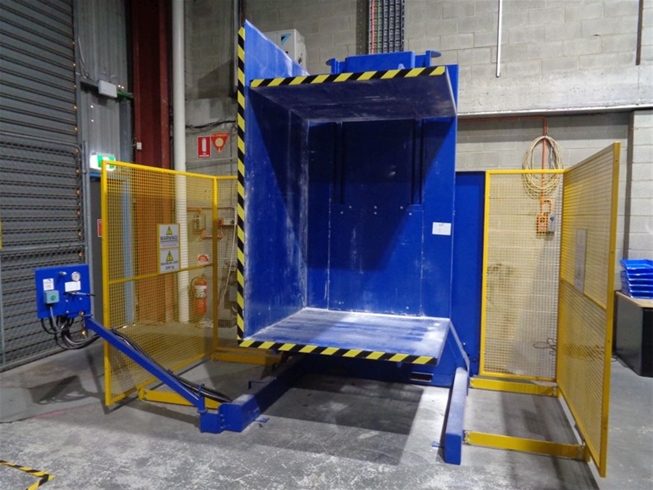
I want to dive deeper into this because the concept is simple but the impact is huge. Many business owners I talk to are so focused on the pallet as a unit of transport that they overlook the cost of the pallet as a unit of storage. By changing your perspective, you can find efficiencies you never thought possible. Let’s explore exactly how this works and what it means for your operation.
The Shift from Pallet Storage to Pallet-less Storage
The core idea is to challenge the assumption that goods must remain on pallets throughout their entire time in your warehouse. For internal movement and storage, other methods can be far more efficient. An automated pallet exchanger makes this shift possible.
- Slip Sheets: These are thin sheets of plastic, paper, or corrugated fiberboard. They are incredibly space-efficient. You can store hundreds of slip sheets in the space occupied by just a few wooden pallets. By storing your stacked goods on slip sheets, you can fit more product into your existing racking systems. The space saved between each layer on a rack can add up to an entire extra level of storage across your facility.
- In-House Pallets: Maybe slip sheets are not right for your product. You can still save money and space. You can use cheaper, lower-quality, or custom-sized pallets for all internal movements. These "warehouse-only" pallets never need to meet expensive export standards. The pallet exchanger then swaps them for a pristine, ISPM-15 compliant wooden pallet or a hygienic plastic pallet just before loading the container.
Quantifying the Space and Cost Savings
Let's look at a practical comparison. The numbers often surprise people when they see them laid out clearly. This is the kind of analysis I do with clients to make sure an investment makes sense for their specific situation.
| Metric | Standard Pallet Storage | Slip Sheet Storage with Pallet Exchanger |
|---|---|---|
| Vertical Space per Unit | Product Height + 15 cm (Pallet Height) | Product Height + 0.3 cm (Slip Sheet Height) |
| Storage Density | Lower | ~15-20% Higher |
| Pallet Cost (for storage) | $15 - $25 per export-grade pallet | ~$1.50 per slip sheet |
| Warehouse Footprint | Requires wider aisles for standard forklifts | Can use specialized push-pull attachments, optimizing flow |
| Capital Tied in Pallets | High (Thousands of dollars in wood) | Very Low |
I remember a client in Vietnam who manufactures consumer electronics for export to Europe. Their finished goods warehouse was at capacity. They were considering renting expensive off-site storage. We installed a pallet inverter at the end of their packaging line. They began storing everything on slip sheets. Within three months, they had freed up nearly 25% of their warehouse space. They cancelled the search for off-site storage and used the extra capacity to take on a new, large customer. This is a real-world example of turning a space constraint into a competitive advantage.
What Role Does Pallet Exchange Automation Play in Meeting Strict Export Compliance?
Are you exporting products from Vietnam to multiple countries? If so, you live with the constant worry of international shipping regulations. One small mistake, like using a non-heat-treated pallet for a shipment to the US or Australia, can have massive consequences. Your entire container could be rejected, quarantined, or even destroyed at the port of entry. The cost of returns, delays, and damage to your customer relationships is a heavy burden. Managing this manually is a stressful, error-prone process that relies on your team getting it right every single time.
Pallet exchange automation creates a final, foolproof checkpoint in your shipping process, virtually eliminating compliance risks. The system is set up at the end of your line, right at the loading dock. It ensures that every single product load is transferred from your internal pallet to the exact type of export-compliant pallet required for its specific destination. This automated transfer removes human error from the critical final step, giving you peace of mind and protecting your business from costly compliance failures.
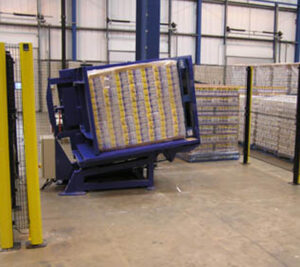
This is more than just a machine; it's a strategic tool for risk management. I've seen companies build complex, color-coded systems and conduct endless training, yet mistakes still happen. People get busy, new employees make errors, and a pallet from the wrong stack gets used. Automation doesn't get tired or distracted. Let's break down how this technology directly addresses the complex world of global pallet rules.
Mastering Global Pallet Standards
Different countries and industries have their own strict rules. An automated system helps you manage them all seamlessly.
- ISPM 15: This is the most common standard for international trade. It requires all solid wood packaging material, including pallets, to be heat-treated or fumigated to kill pests. An automated exchanger ensures that only verified ISPM 15 stamped pallets are used for the final load. You no longer risk a non-compliant pallet accidentally entering your export flow.
- Hygienic Pallets (Plastic/Composite): The food, beverage, and pharmaceutical industries often ban wood pallets entirely. They require products to be shipped on non-porous, easily sanitized plastic pallets to prevent contamination. Your pallet inverter can be the dedicated station where goods are transferred from internal wooden pallets to sterile plastic ones, ensuring you meet strict hygiene standards.
- Customer-Specific Requirements: Sometimes, your largest customers have their own rules. They might demand a specific pallet size, quality, or material to fit their own automated warehouse systems. A pallet exchanger makes it easy to accommodate these special requests without disrupting your entire internal workflow.
Creating a Digital, Traceable Process
For a forward-thinking leader, automation is also about data and control. This is where pallet exchangers connect to your broader digital transformation goals. Here's how it elevates your compliance process.
| Feature | Manual Process | Automated Process with Pallet Exchanger |
|---|---|---|
| Pallet Selection | Relies on worker knowledge and visual checks. | Can be linked to an ERP/WMS. The system gets an order and automatically requests the correct pallet type. |
| Verification | A supervisor might spot-check. Prone to error. | Barcode scanners can verify the pallet type and match it to the shipping order before the exchange cycle begins. |
| Record Keeping | Manual logs or no record at all. | The system can automatically log the transfer, creating a digital record that the correct pallet was used for a specific shipment. |
| Error Handling | An error is often found too late (at the port). | If the wrong pallet is presented, the system can halt the process and send an alert, preventing the mistake entirely. |
I worked with a steel wire exporter whose business was growing fast. They were shipping to North America and Europe, each with different pallet demands. Their biggest fear was a shipment being rejected over a simple pallet mistake. We integrated a pallet inverter with their order system. When a worker scanned an order bound for Germany, the system would only allow the cycle to start if a certified Euro-pallet was scanned into the machine. This simple handshake between the scanner and the inverter eliminated 100% of their pallet-related shipping errors. It transformed their compliance from a source of anxiety into a guaranteed, documented step in their process.
How Do You Integrate a Pallet Exchanger into an Existing, Aging Production Line?
Do you look at your production line, with equipment that has been running reliably for over a decade, and worry about introducing new technology? You want to modernize to boost efficiency, but the thought of a complex integration project is a major concern. You fear extended downtime, compatibility nightmares, and the possibility that the new machine will create more problems than it solves. This hesitation is completely understandable, as a failed integration can be incredibly costly.
Modern automated pallet exchangers are designed specifically for this scenario. They can be integrated as simple, modular "plug-and-play" additions rather than complex, disruptive overhauls. You can place the machine at the end of your current line, connected by a small section of conveyor. The communication between your old system and the new pallet exchanger can be handled with very basic signals, like a simple sensor that says "a pallet is here" and a signal that says "the exchange is finished." This approach avoids deep software programming and minimizes disruption.
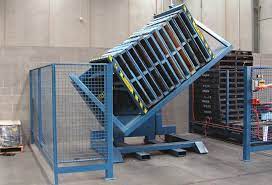
I am an engineer by training, and I've spent my career working with machinery of all ages. One of the biggest lessons I've learned is that you don't always need to rip and replace. Often, the smartest solution is to strategically add new capabilities to a solid, existing foundation. An aging production line isn't a liability; it's a proven asset. The goal is to enhance it, not fight with it. Let's look at the practical steps for a smooth and painless integration.
The "Mechanical Handshake" Approach
You don't need your 20-year-old wrapping machine to have a complex digital conversation with a new pallet inverter. You just need them to acknowledge each other. This is what I call the "mechanical handshake."
- Upstream Connection: The integration can be as simple as a photoelectric sensor placed on the conveyor leading into the pallet exchanger. When a pallet load breaks the beam of the sensor, it sends a basic "start" signal to the pallet exchanger's standalone controller (PLC). The pallet exchanger then runs its pre-programmed cycle automatically.
- Downstream Connection: Once the exchange cycle is complete, the pallet exchanger's PLC sends a simple "finished" signal. This signal can activate the exit conveyor to move the new pallet load away, or it can simply turn on a green light to let a forklift operator know the load is ready for pickup.
This method requires no changes to the programming of your existing equipment. It allows the new machine to work with the old one without causing conflicts.
Physical Footprint and Layout Options
A common concern with older factories is the lack of floor space. Modern pallet exchangers are designed with this in mind and come in various configurations to fit into tight spaces.
| Model Type | Footprint & Layout | Best Use Case |
|---|---|---|
| Inline (FS Model) | Straight-through design. Pallet enters the front and exits the back. Requires more linear space. | Ideal for fully automated lines where the product flow is continuous and in a straight line. |
| Right-Angle (FZ Model) | L-shaped design. Pallet enters the front and can exit to the left or right. More compact footprint. | Perfect for end-of-line applications where space is limited or where forklift access is from the side. |
| Standalone | Loaded and unloaded by a forklift from the same side. No conveyor integration needed. | The most flexible option. Can be placed anywhere in the warehouse or loading area. Ideal for lower volume or varied tasks. |
I once helped a metal parts manufacturer in Mexico. Their stamping and packing line was a collection of machines from different eras, but it worked. They needed to switch to plastic pallets for a new automotive client. They had a small, awkward empty space next to their loading bay. A standard inline machine wouldn't fit. We installed a right-angle pallet exchanger. The main conveyor fed pallets into the front, and a forklift picked up the finished loads from the side. The entire installation and commissioning took less than two days, most of it over a weekend. On Monday morning, their aging line was shipping product on brand new pallets without missing a beat. This shows that with the right planning, integration is a manageable and low-risk project.
What is the Real ROI of an Automated Pallet Exchange System for a Growing Business?
As a business owner, every major purchase comes down to one question: will this investment make my company more profitable? You see the price of a new machine, and it's a significant capital expense. You hear the promises of efficiency and savings, but you need to see the hard numbers. You need a clear, realistic calculation of the Return on Investment (ROI) to justify the decision to your partners, your bank, and yourself. An emotional decision is a bad decision; a data-driven one builds a stronger business.
The real ROI of an automated pallet exchange system is a combination of direct, measurable cost reductions and powerful, strategic benefits. The most obvious savings come from reduced labor, less product damage, and lower pallet costs. But the true value also includes the money you don't spend on warehouse expansion and the new revenue you can generate because your logistics can finally keep up with your sales growth. It's a machine that pays for itself through savings while simultaneously unlocking new opportunities.
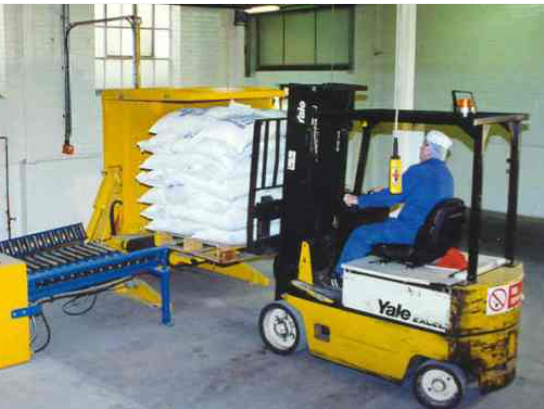
I built my own factory from the ground up, and I remember the anxiety of signing those first big checks for equipment. That experience taught me to be rigorous in my financial analysis. I want to walk you through the same kind of ROI calculation I perform for my own business and for my clients. This isn't just a sales pitch; it's a business case. Let's break it down into tangible numbers.
Calculating the Tangible ROI
To understand the financial impact, we need to look at several key areas of savings. Let's use a conservative example of a company in Vietnam shipping 50 pallets per day.
| Cost Category | Manual Process (Before Automation) | Automated Process (After Pallet Exchanger) | Annual Savings |
|---|---|---|---|
| Labor Costs | 2 workers x 3 min/pallet x 50 pallets/day = 300 min/day. At $5/hr, this is $25/day. | 1 worker x 1 min/pallet x 50 pallets/day = 50 min/day. At $5/hr, this is ~$4/day. | $5,460 |
| Product Damage | 1% damage rate during manual transfer. Assume avg. value of $1000/pallet. $10/pallet x 50 pallets = $500/day. | Damage rate drops to <0.1%. Cost is negligible. | ~$130,000 (This is a huge variable, but even a small reduction is significant) |
| Pallet Costs | All 50 pallets are expensive export-grade ($20 each). Daily cost = $1000. | 49 pallets are cheap in-house ($8 each), 1 is for final export. Assume an avg. cost of $9/pallet across the cycle. Daily cost = $450. | ~$143,000 (By not tying capital in export pallets for storage) |
| Warehouse Space | If automation prevents renting 500 sq. meters of off-site storage at $8/sq.m/month. | N/A | $48,000 |
| Total Tangible Savings | ~$326,460 per year |
Note: These numbers are illustrative. Your actual savings will depend on your specific labor costs, product value, and operational scale. The point is to follow the methodology.
With a typical automated pallet exchanger costing between $40,000 and $80,000, you can see that the payback period is often less than a year, especially for businesses with high-value goods or significant export volumes.
The Intangible and Strategic ROI
The spreadsheet doesn't tell the whole story. The most successful leaders I know, like Javier, think beyond the immediate numbers and consider the long-term strategic value.
- Improved Safety and Morale: Eliminating the manual task of restacking heavy loads reduces the risk of back injuries and worker compensation claims. A safer workplace is a more productive and positive workplace.
- Enhanced Reputation: When your customers receive every shipment on a clean, compliant, and undamaged pallet, it builds trust. You become known as a reliable, professional partner. This reputation is priceless.
- Scalability for Growth: This is perhaps the most important benefit. The pallet exchanger removes a major bottleneck. When a huge, unexpected order comes in, you don't have to worry if your shipping department can handle it. You have the capacity. The machine gives you the confidence to say "yes" to growth.
An investment in this type of automation is not an expense. It is a strategic move that makes your business more resilient, efficient, and ready for the future.
Conclusion
Automated pallet exchange solves critical space and export challenges. It transforms a logistics bottleneck into a competitive advantage, empowering your business to grow without limits in Vietnam and beyond.





